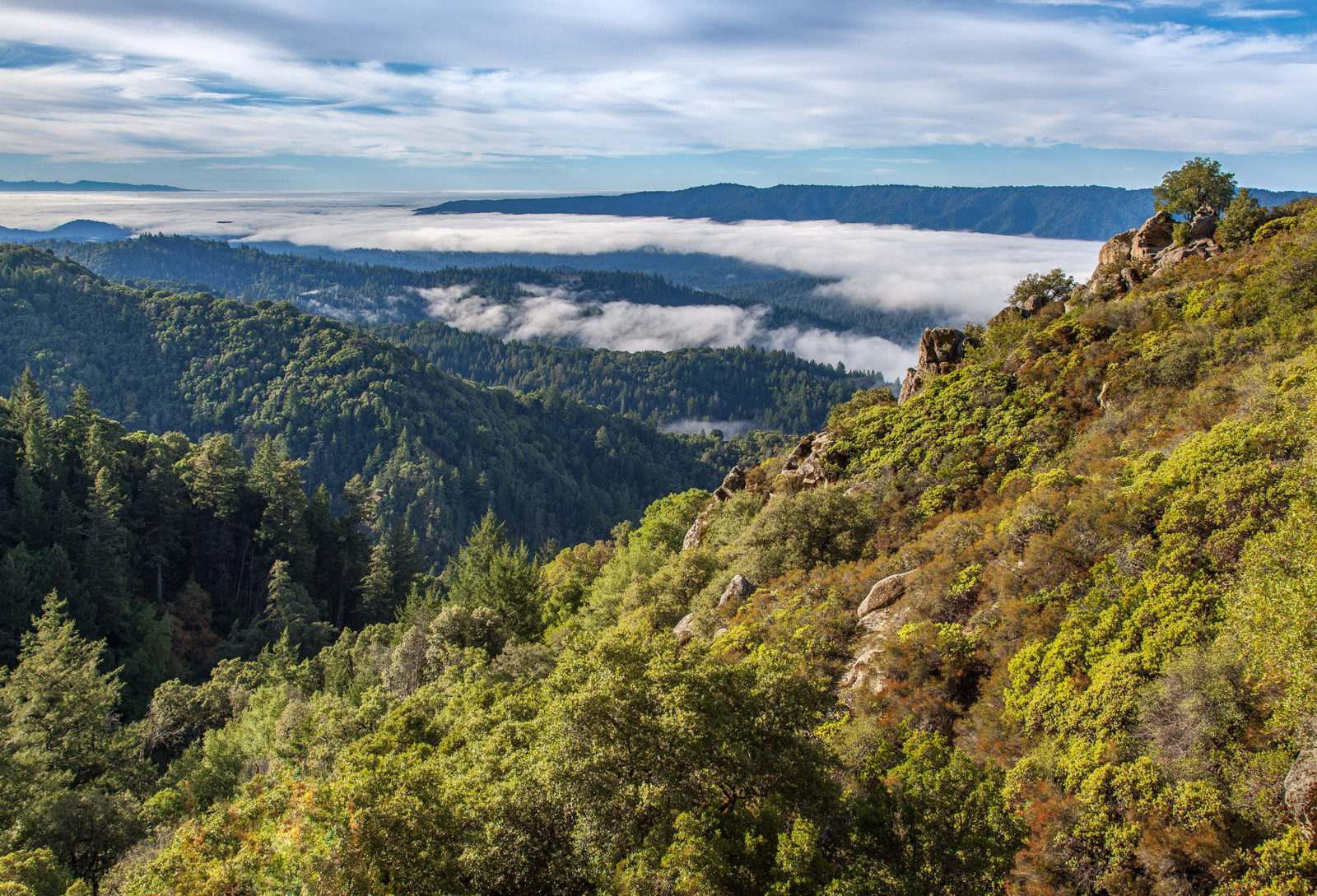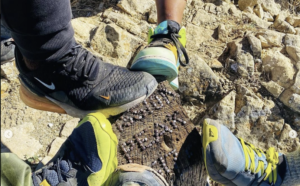Driving south along Skyline Boulevard (Route 35), the forest thick with Douglas fir and a green canopy of madrones casting shadows on the road, I find myself saying out loud, “I can’t believe I’m here.” Less than an hour ago I was battling stop-and-go traffic in San Francisco. Now as the narrow road winds and climbs the hills and the trees reach higher, I leave a busy week behind. When the forest opens up, I turn into the new Robert C. Kirkwood Entrance at Castle Rock State Park.
Castle Rock is a portal to the Santa Cruz Mountains, the Pacific coast, and hundreds of miles of public land and trails. It’s Silicon Valley’s closest state park and less than one really good podcast’s drive time from downtown San José. Because of its convenience, the park’s entrance has been expanded and overhauled with modern amenities the likes of which Silicon Valley parks haven’t seen before, all opening to the public this summer. I’m here to explore what many hope is the future of California state parks.
Remember, they are an exotic species in the Western United States, and are rapidly increasing their geographic range and range of habitats. Are they outcompeting or excluding native species in the process? How would we know? We have done almost nothing to monitor changes in the assemblage of mushroom species in areas before and and after the incursion of death caps.
Further Reading
Pringle et al, “The ectomycorrhizal fungus Amanita phalloides was introduced and is expanding its range on the west coast of North America,” Molecular Biology 2009
Lockhart et al, “Simultaneous emergence of multidrug-resistant Candida auris on 3 continents confirmed by whole-genome sequencing and epidemiological analyses,” Clinical Infectious Diseases 2017
Battalani et al, “Aflatoxin B1 contamination in maize in Europe increases due to climate change,” Scientific Reports 2016
EXPLORE | CASTLE ROCK STATE PARK

A 21st-Century Park
Sempervirens Fund has transformed 33 acres off of Skyline Boulevard from a Christmas tree farm into a restored black oak forest and a state-of-the-art entrance for the modern explorer of Castle Rock State Park and the Santa Cruz Mountains. A destination in its own right, the expansive entrance area offers plenty of space to meet friends and family, room for kids to play, access to Wi-Fi, and all the facilities you need to hit the 34 miles of trails. Enabled by the generosity of Sempervirens Fund donors, and a lead donation from the Kirkwood Family, here’s what to expect when you pull off Skyline:
»Low-impact amenities
• A 90-car parking lot paved with environmentally sensitive permeable paving and electric car-charging stations, as well as bike racks. Parking costs $10 for the day.
• Solar panels that offset the power needs of lights, a small office, and pay stations.
• Drinking water, flush toilets, and sinks.
»Physically and digitally connected
• Two trailheads that connect to 34 miles of trails, including the Castle Rock Trail and Saratoga Gap Trail.
• Wi-Fi in the parking lot, picnic areas, amphitheater, and restrooms.
• An app by OuterSpatial, with trail maps that describe the area, park’s history, and natural landscape.
»Gathering spaces
• An amphitheater with a pull-down movie screen and firepit that will seat 60 for events featuring state park interpreters, local artists, musicians, and the outfitter REI; the secluded setting is available to rent for private events.
• Picnic tables and ample seating areas for gearing up.
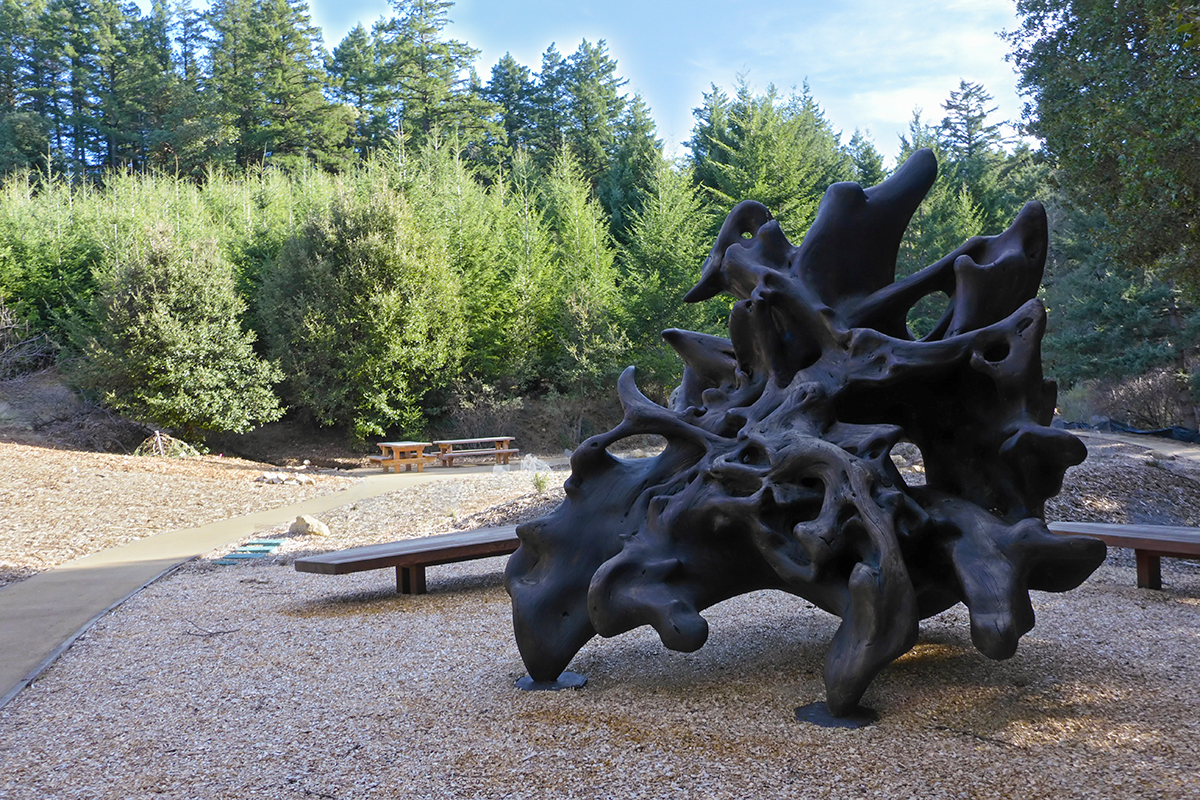
»Interactive landscapes
• “UPROOTED,” a wooden statue of a redwood’s roots by artist Bruce Johnson, is a natural jungle gym for kids. It was contributed by the Kirkwood siblings in honor of their mother, Jean Gerlinger Kirkwood, wife of Robert C. Kirkwood and committed advocate for the importance of play in childhood development.
• An extensive native plant garden, created in collaboration with the Amah Mutsun Land Trust, the Muwekma Ohlone Tribe, volunteers, and Sempervirens Fund, pays tribute to the plants that native people once used for food, medicine, utility, and ceremony.
(Photos by Russell Ferretti-Hoyle)
“This entrance is really meant to be a gateway to Castle Rock…and to a trail network that connects to many other spectacular redwood parks in the region,” says Sara Barth, executive director of Sempervirens Fund, the Bay Area land trust that has been inextricably involved with Castle Rock State Park since its inception. “It’s also a destination in its own right.”
My hiking guide is Beatrix Jiménez from Sempervirens Fund; she monitors and cares for the nonprofit’s many properties and is deeply familiar with the natural features of Castle Rock. We set off from the new entrance for a three-mile hike along wooded streams and open hillsides to the imposing Goat Rock, with the promise of a view over the vast San Lorenzo Valley. It’s just a fraction of the 34 miles of trail in the park, but a good glimpse of the quirky geology, postcard vistas, and unexpected mix of people who are redefining this place.
Jiménez and I hike through filtered sunlight in a forest of madrones—those smooth, red-barked trees—plus tanoaks that fill in the understory and shaggy evergreen Douglas firs. Jiménez points out California blackberries, coyote brush, and the leaves of a few wood roses that dot the banks of Kings Creek, the flowing stream that runs along the trail.
We’re on land that was until recently a Christmas tree farm, which Sempervirens Fund purchased in 2010 with a plan to build Castle Rock’s new entrance. Rehabilitating the land here is an experiment in both community-building and ecological restoration.
“We have to keep pulling up French broom,” Jiménez says, pointing to a clump of the leafy shrub. Its eye-catching yellow flowers mask an aggressive invader likely brought to the Bay Area from the Mediterranean or the Azores in the mid-1800s. Sempervirens Fund staff and volunteers have spent long days at the new property digging out the roots of these prolific seed-spreading flowers. Their toxic foliage and seeds now cover approximately 100,000 acres in California, according to the California Invasive Plant Council. They displace native plant and forage species and their tall stands block the sunlight, making it harder for the preferred madrone and redwood saplings to grow.
We wander down a cleared trail that connects the new acres with the Saratoga Gap Trail. Jiménez points to a wide opening in the tanoak underbrush where trail crews have arranged felled trees in a crisscrossed pattern along the stream bank in an attempt to battle erosion during winter and spring rains. The area was once a dirt road used by the former owners. Decades of vegetation clearing and the severely compacted soil have prevented native plants from reestablishing here.
“All of the soil that moves from this area during a rainstorm ends up in the stream,” Jiménez says.
On the opposite bank, flags mark black oak and maple plantings, another attempt to stabilize the impacted land. Black oaks, which have been planted along the entrance and throughout the new property, thrive in Castle Rock’s higher elevations and are deciduous. Before their leaves drop for the winter, they turn a vibrant gold, and their large acorns draw squirrels and birds, including the acorn woodpecker.
The idea for Castle Rock State Park began in the 1950s when conservationists Dorothy and Russell Varian, an early Silicon Valley inventor and physicist, secured an option to buy lands in the Santa Cruz Mountains. The Varians loved to hike and climb the unusual sandstone formations in the area, but Russell unexpectedly passed away before the purchase was complete. It wasn’t until 1968 that Dorothy closed the deal, buying 566 acres and donating them to the California state parks department. It was the seed of Castle Rock. Sempervirens Fund has continued to buy and transfer parcels—more than 4,000 acres over the past 51 years—to the state park, expanding it to its current eight square miles. Sempervirens Fund has purchased and hopes to add another 185 acres to the park soon.
We ascend the Ridge Trail into hotter, drier chaparral territory. It’s marked by green chamise and manzanitas, with their small, moisture-conserving leaves, as well as orange sticky monkeyflower. Three turkey vultures circle overhead and a fence lizard darts across a warm rock.
We hike by a group of rock climbers gathered at the base of a rocky outcropping, the kind that drew the Varians and Sempervirens Fund here. Climbing groups have explored this area since the early 1900s, intrigued by the caves and pockets that dot the thick and ancient Vaqueros Sandstone. Some 30 to 40 million years ago, the sedimentary Vaqueros Sandstone began to form at the bottom of a sea, and today large grains of quartz and feldspar are held together by calcium carbonate and organic material. Shaped by the wind and rain, these sculpted formations, called tafoni, make for easy-to-
difficult rock climbing.
We follow the trail to the top of Goat Rock, a particularly massive tafoni outcropping, and look across the San Lorenzo Valley. A light breeze rustles the trees above us, a welcome relief from the dry heat at this elevation.
“I love it here,” Jiménez says. “You get to hike through several different plant communities. You start off in this mixed evergreen forest and then hike up to chaparral where it’s more exposed. Then you have this vista.”
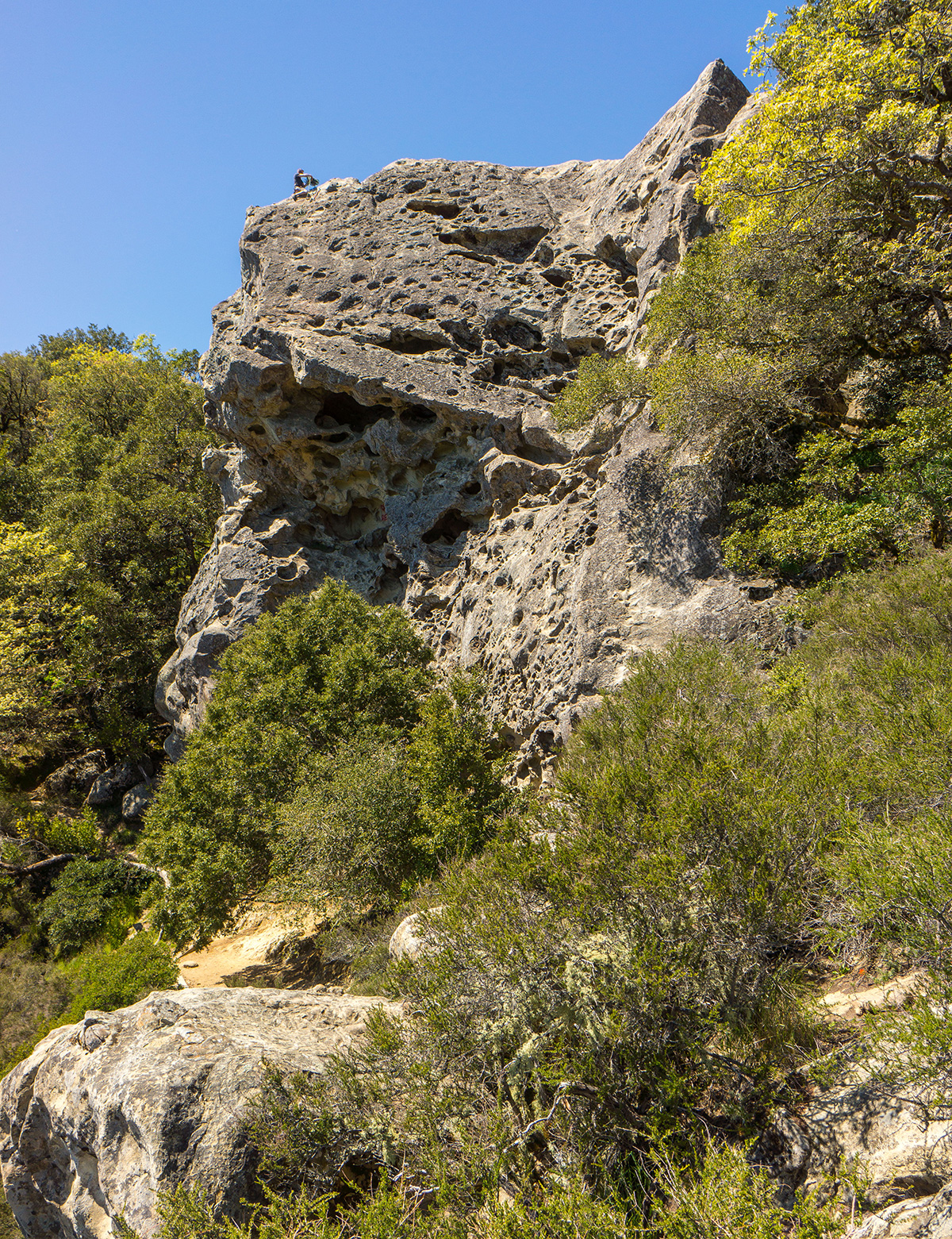
Before my hike with Jiménez, I attended a native plant garden event that Sempervirens Fund, the Amah Mutsun Land Trust (AMLT), and the Muwekma Ohlone Tribe hosted at the new entrance. Eleanor Castro, an Amah Mutsun elder and descendant of the Ohlone Costanoan people, shared stories about this land and her ancestors. She told me that the land we were standing on was home to the Muwekma Ohlone Tribe until the arrival of Spanish missionaries in 1776 led to their displacement and relocation to the missions. When the tribes were forced to leave their land, they lost more than just property. The cultural knowledge, traditions, and significance of certain plants were forgotten for centuries.
In partnership with Sempervirens Fund and with permission from the Muwekma Ohlone Tribe, the Amah Mutsun Land Trust is leading the native plant garden project in the Kirkwood entrance while relearning traditional uses for these plants and perfecting ancestral recipes. Recently Castro and others experimented with cooking soaproot bulbs to make them edible. They’ve also tried stinging nettle soup and grinding tanoak acorns into flour for cooking. This is part of the cultural restoration that has mirrored the ecological restoration at the park’s new entrance.
Beyond Goat Rock, the trail flattens out into an oak woodland. Buttercups, baby blue eyes, and Indian paintbrush have sprung up to form a mountaintop meadow. Around its edges blooms miner’s lettuce, the leaves of which local tribes once used to make salads, a practice their descendants are repeating as part of their return to native lands, according to Castro.
“I’ve seen these leaves grow as big as my hand,” Jiménez adds.
On another recent community planting day, volunteers, tribal leaders, and Sempervirens Fund staff put more than 200 black oaks in the ground. Madrone and canyon live oak trees are growing among the oak saplings, the beginnings of a diverse forest where a commercial tree farm stood just eight years earlier.
Every time they dig a hole for planting, AMLT members sprinkle a bit of tobacco in the hole. “When you take something from land you want to give something back,” Castro says.
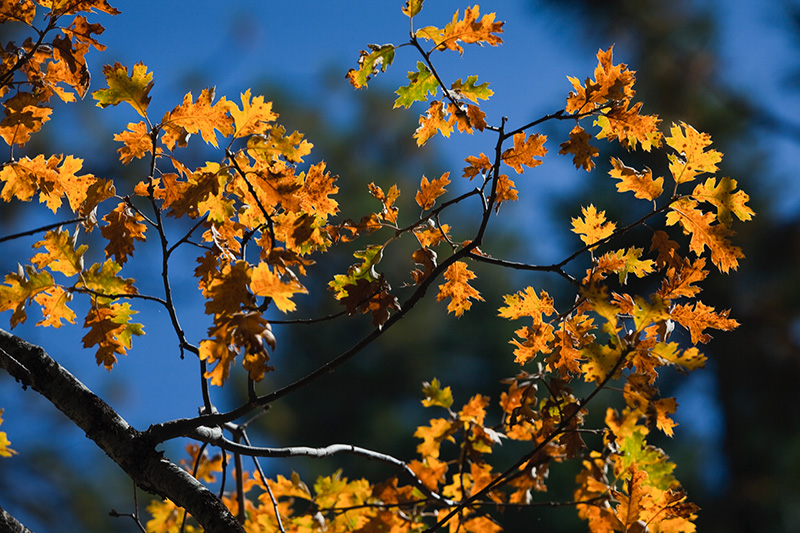
For all of Castle Rock State Park’s remarkable attributes, its popularity has been hampered by limited parking and facilities, and in 2011 it was slated for closure by then-Governor Jerry Brown during California’s state parks financial crisis. But Sempervirens Fund stepped in with funds that kept the park open to the public with the help of the nonprofit Friends of Santa Cruz State Parks, which provides staff at the park. Out of the crisis grew a new way of caring for Castle Rock, as well as for other state parks.
In a model familiar to Silicon Valley, Castle Rock has remained open due to public-private partnerships, in which non profits are not only expanding the size of public lands but helping to improve their infrastructure, rehabilitating the landscape’s ecology, and offering new creative activities for the public. “I hope this entrance project will be a model for other public-private partnerships in the state park system,” Sempervirens Fund’s Barth says.
Brandon Caskey, a state parks employee since 2009, leads hikes and programs at Castle Rock and Portola Redwoods state parks. “State parks needs partners like Sempervirens Fund,” he says. “They’re our key players in helping us achieve the goals that we set. In a project like this—this is a huge-scale project—to avoid some of the holdups that can take place with government entities, it’s easier for us to work with these supporting organizations.
“While this new parking lot will allow many more people to access the park,” he adds, “it will also give more people the ability to become stewards and learn about our local parks. Our main goal is to get lots of people out into the backcountry and take care of the resources that are theirs. This is a public park, so when you hike here, you’re hiking on your own property.”
While the Kirkwood entrance will remain in Sempervirens Fund’s possession for now, the plan is for it to eventually become part of Castle Rock State Park. In the meantime, a leasing agreement with the California state parks department and a partnership with the nonprofit Friends of Santa Cruz State Parks will allow Sempervirens Fund to open this space to the public without waiting for the state to take over ownership. Private donations and parking fees will go to the parks department to help support a docent program and facilities maintenance as groups of eager explorers descend upon the property.
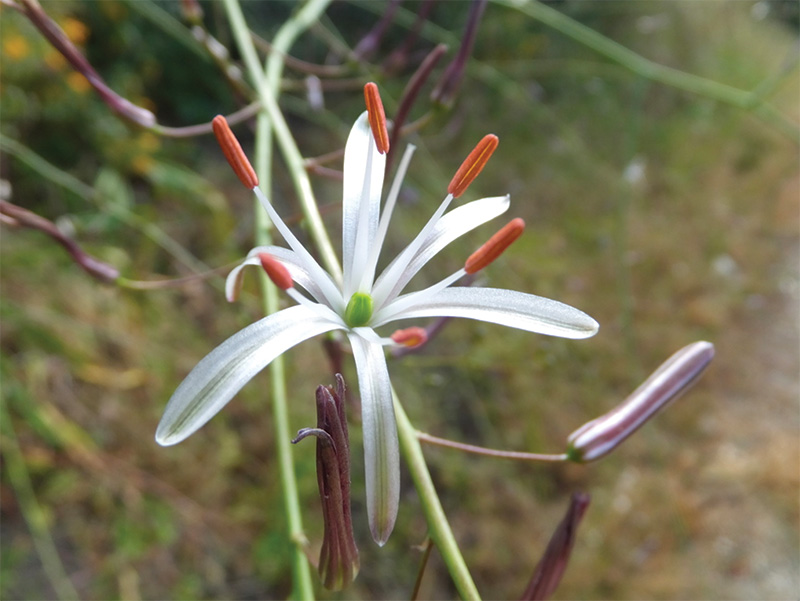
Late at night and early in the morning, when the trails are empty of human visitors, another kind of local enjoys Castle Rock’s trails. Jiménez tells me that when she recently reviewed photos taken by a wildlife camera mounted on the new trail near the park entrance, she found images of mountain lions and bobcats.
“They use the trails too,” she says. “This area is being protected and will be for generations to come. There will be many others who will enjoy it later.”
As we emerge from the woods and return to the new entrance, the spring sun breathes life into the new plants. It’s difficult to leave this place and return to city life, but I know I’ll be back. An escape this close to home will be too tempting to resist.

